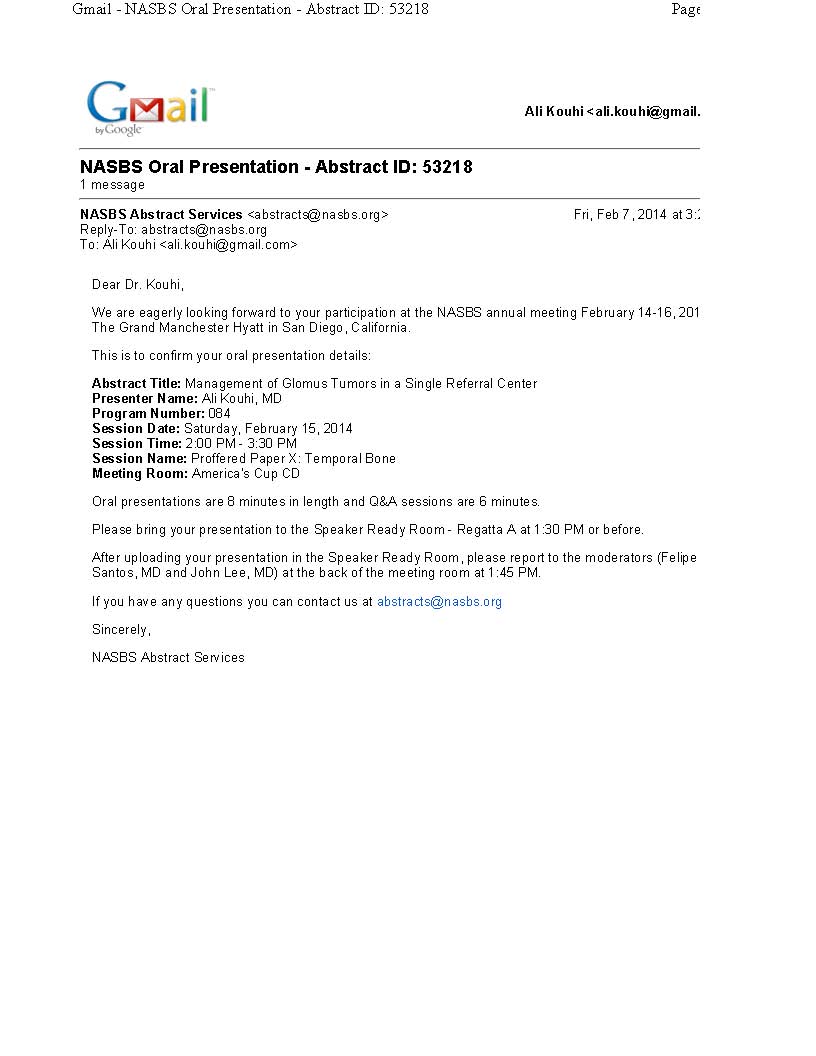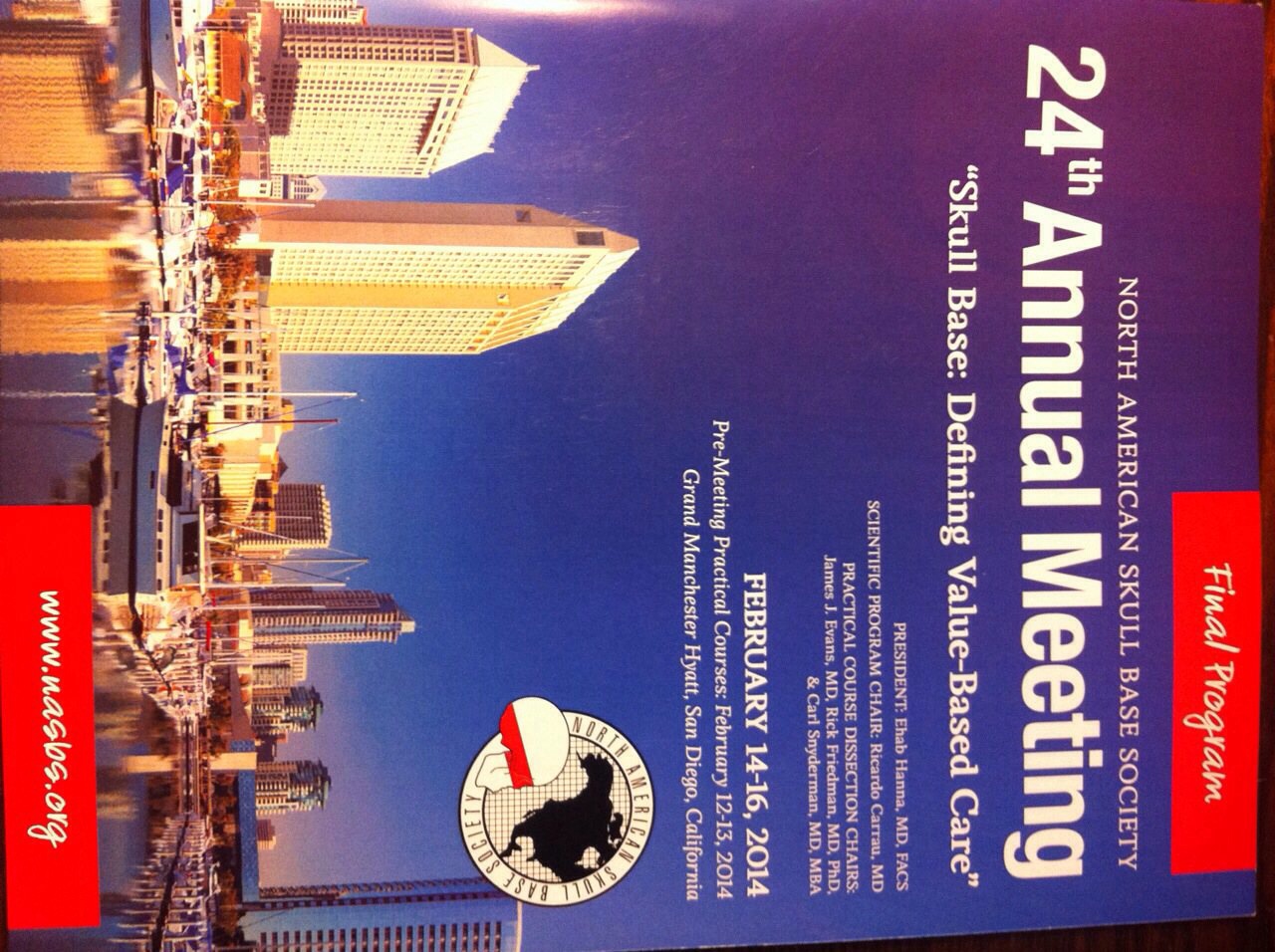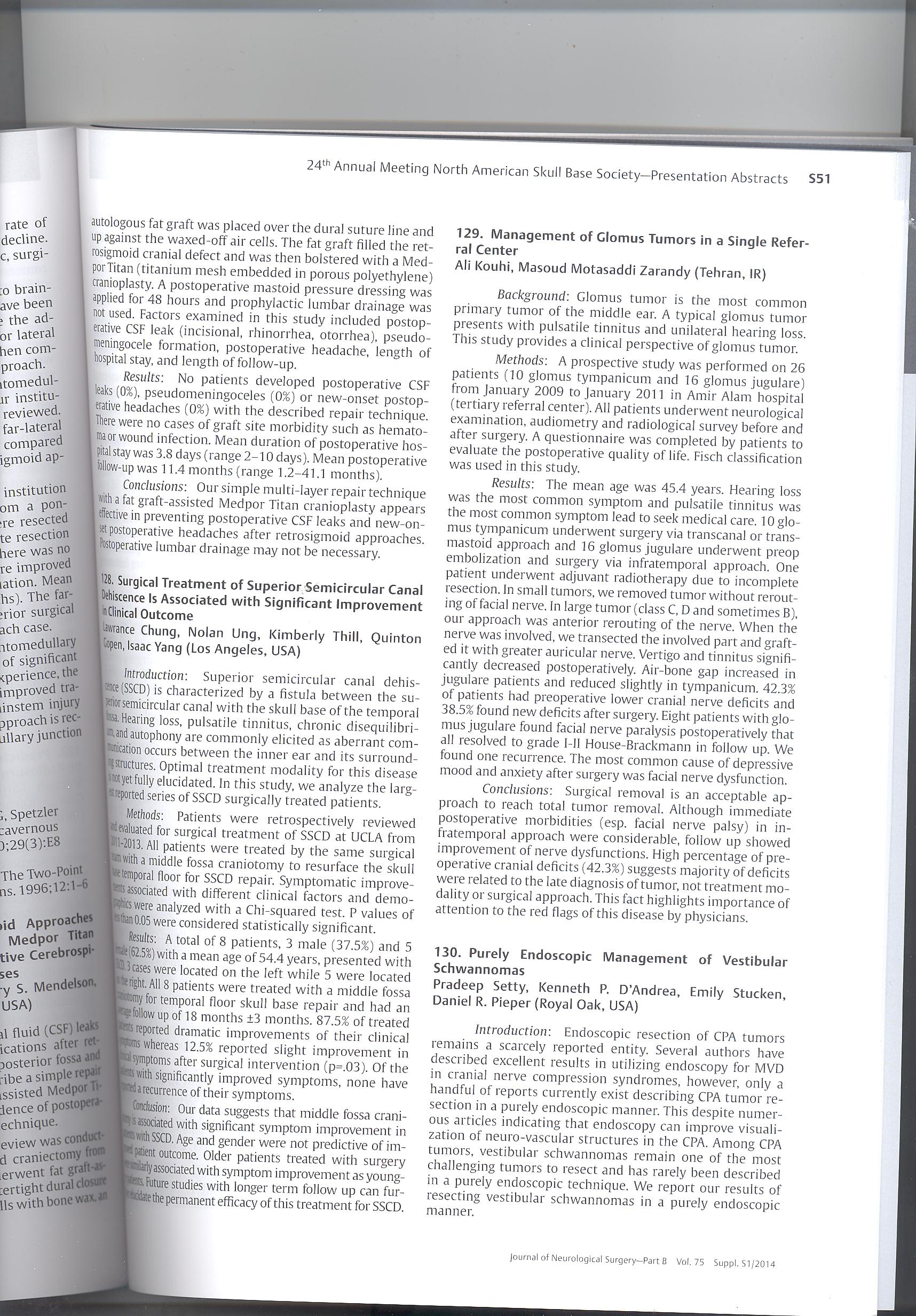Ali Kouhi | International Congress Form
Application Code :
306-0114-0044
Created Date : Saturday, May 31, 2014 11:16:27Update Date : Tuesday, June 10, 2014 19:57:22IP Address :2.191.152.181
Submit Date : Tuesday, June 10, 2014 19:57:58Email : a-kouhi@tums.ac.ir
Personal Information
|
Name : |
ali |
|
Surname : |
kouhi |
|
School/Research center : |
School of Medicine |
|
If you choose other, please name your Research center : |
|
|
Possition : |
Assistant professor |
|
Tel : |
+98-21-66703037 |
|
E-mail : |
a-kouhi@tums.ac.ir |
Information of Congress
|
Title of the Congress : |
North American Skull Base Society Meeting |
|
Title of your Abstract : |
Management of Glomus Tumors in a Single Referral Center |
|
country : |
USA |
|
From : |
Friday, February 14, 2014 |
|
To : |
Sunday, February 16, 2014 |
|
Abstract(Please copy/paste the abstract send to the congress) : |
Background. Glomus tumor is the most common primary tumor of the middle ear. A typical glomus tumor presents with pulsatile tinnitus and unilateral hearing loss. This study provides a clinical perspective of glomus tumor.
Methods. A prospective study was performed on 26 patients (10 glomus tympanicum and 16 glomus jugulare) from January 2009 to January 2011 in Amir Alam hospital (tertiary referral center). All patients underwent neurological examination, audiometry and radiological survey before and after surgery. A questionnaire was completed by patients to evaluate the postoperative quality of life. Fisch classification was used in this study.
Results. The mean age was 45.4 years. Hearing loss was the most common symptom and pulsatile tinnitus was the most common symptom lead to seek medical care. 10 glomus tympanicum underwent surgery via transcanal or transmastoid approach and 16 glomus jugulare underwent preop embolization and surgery via infratemporal approach. One patient underwent adjuvant radiotherapy due to incomplete resection. In small tumors, we removed tumor without rerouting of facial nerve. In large tumor (class C, D and sometimes B), our approach was anterior rerouting of the nerve. When the nerve was involved, we transected the involved part and grafted it with greater auricular nerve. Vertigo and tinnitus significantly decreased postoperatively. Air-bone gap increased in jugulare patients and reduced slightly in tympanicum. 42.3% of patients had preoperative lower cranial nerve deficits and 38.5% found new deficits after surgery. Eight patients with glomus jugulare found facial nerve paralysis postoperatively that all resolved to grade I-II House-Brackmann in follow up. We found one recurrence. The most common cause of depressive mood and anxiety after surgery was facial nerve dysfunction.
Conclusions. Surgical removal is an acceptable approach to reach total tumor removal. Although immediate postoperative morbidities (esp. facial nerve palsy) in infratemporal approach were considerable, follow up showed improvement of nerve dysfunctions. High percentage of preoperative cranial deficits (42.3%) suggests majority of deficits were related to the late diagnosis of tumor, not treatment modality or surgical approach. This fact highlights importance of attention to the red flags of this disease by physicians. |
|
Keywords of your Abstract : |
Glomus tuomr; paraganglioma; lateral skull base. |
|
Acceptance Letter : |
 |
|
The presentation : |
Oral |
|
The Cover of Abstract book : |
 |
|
Published abstract in the abstract book with the related code : |
 |
|
Where has your abstract been indexed? : |
ISI |
|
If you choose other, please name : |
|
The Congress Reporting Form
|
How many volunteers were present at the Congress? : |
500 |
|
Delegates from which countries presented in the congress? : |
USA, Ca, UK, Germany, Iran, Turkey, Italy |
|
Were the delegates of any other organizations present in the congress? : |
No |
|
If yes, please write the names of the organizations in the box : |
|
|
What were the responses to your talking points? Were specific questions or concerns raised? : |
Experience of Iran in glomus tumors were appreciated. Treatment strategy was questioned. whether results of our research lead to change in strategy was asked. |
|
If you met staff members, please list their full names & positions. : |
Dr Hamed Sajjadi, Professor in Stanford University |
|
Please inform us if there are any follow up actions we need to talk with the members of the congress : |
there is no especial action needed. however, contracts can be made and is quite helpful, because north american skull base society has very good fellowship programs and an be helpful in education of our academic persons. they have lots of educative wirkshops and hands on courses. their membership have advantages such as journal access. however, this society has very restriced and tight membership guidelines. |
|
Your experiences about the travel processes(Providing ticket, accommodation,...) : |
Accomodation was quite difficult, especially regarding money transfer |
|
Please give a briefing of your own observations and outcomes of the congress: : |
new advances especially in technical issues were very interesting. microscopes with 3d view and camera can be very helpful but they are very expensive.
endoscopic approaches are advancing with a very high speed.
multidisciplinary lateral skull base approaches have lead to better outcomes of patients and lower morbidities.
advances in technology is inhibiting us from keeping pace with other countries.
main issue of the meeting was improving outcome of benign neoplasms of skull base. most of these patients have lots of morbities due to surgical intervention. new advances in radiotherapy has resulted in better control of these tumors with lower complications. |